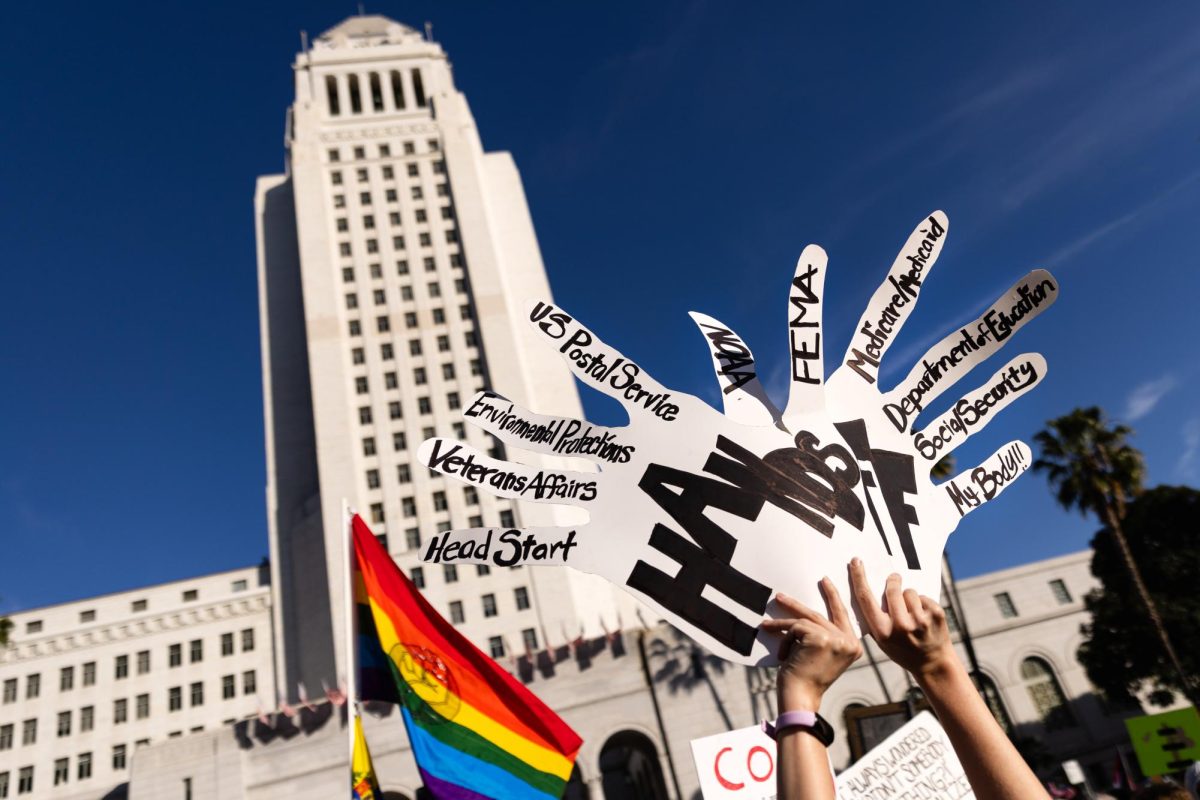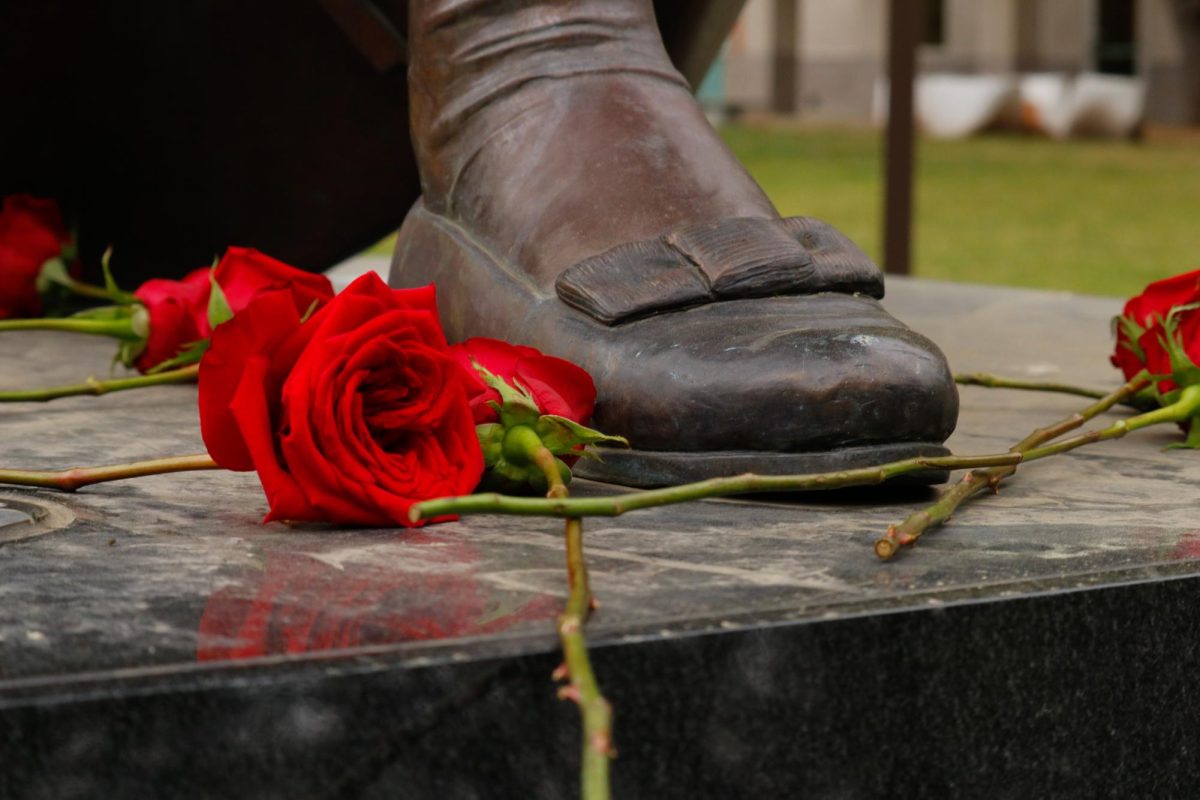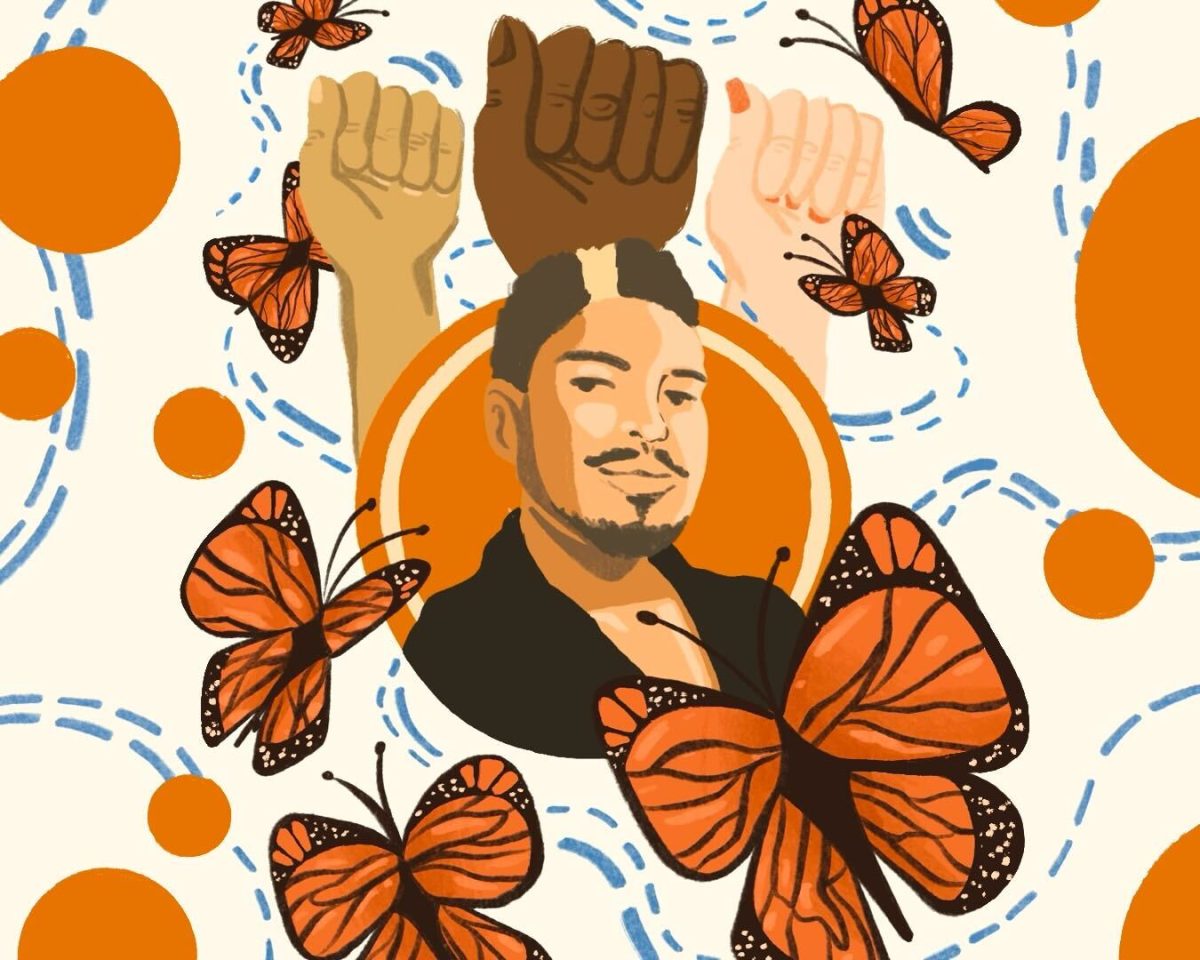Maria Elena Gaitan, interdisciplinary artist and social activist, held a lecture Wednesday at the Johnson Auditorium called, “The Art of Performance and Social Justice: Truth-telling, Laughter, and a Song.”
Examining a variety of social issues such as history, race and gender through performance art, Gaitan learned from an early age that fighting for the rights of others was something she wanted to pursue.
The lecture began with a brief background story of how she grew up. Her mother, both a teacher and a musician, was a great influence in her decision to pursue playing the cello.
“I didn’t choose it. It chose me,” Gaitan said during the latter part of the lecture, explaining that a friend of her mother’s actually thought the cello suited her perfectly because of her height.
Playing the cello in cut throat competitions was anything but easy, even though it was clear she had the skills. Gaitan explained that she had a lot to overcome in terms of not only racism, but also classicism.
While most parents were able to watch the performances of their children, she had to learn to “toughen up” and learn how to play on her own, without her mother’s presence – not because she did not want to attend, but because she worked long hours in order to provide for her family.
As she learned how to be able to stand alone and “bust through the color and gender line” during musical performances, Gaitan used the tools she had picked up and carried them with her as she made her transition into a world of activism.
Gaitan recalls being a part of “La Marcha de la Reconquista,” which took place May 5, 1971. Here, she became a spokesperson for those fighting against racial and institutionalized discrimination.
Another large event Gaitan was able to be a part of was the Labor for Peace Conference in St. Louis, Missouri, which occurred the following year in 1972.
While she has been involved in many different marches and conferences to speak in front of hundreds of people, Gaitan said she realized there was a great connection between her as a musician and her as a social activist – and then she realized she could combine the two.
Her performance art pieces, such as “Chola con Cello: A Home Girl in the Philharmonic,” blend together important social issues with her passion for music in a way she describes as “a juxtaposition of opposites.”
Throughout everything that has taken place in her life, she reveals there are two things artists should remember: not everybody has to like it (and not everybody will) and that even if an artist receives a good review, they should take it with modesty.
Gaitan, who has taken her own advice in terms of artistry, makes it clear that one should “swim against the current” instead of “chasing the dough” and that one should always go with what they believe in, not what everyone wants.





